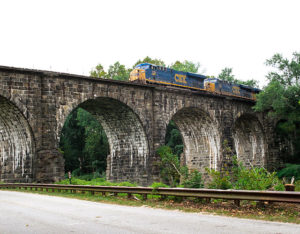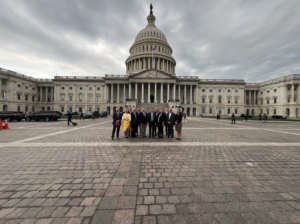Rolling toward a new Norfolk
Written by jrood(The editorial below appeared in the Norfolk Virginian-Pilot .) This much is sure: Light rail will transform the city of Norfolk, Va. How, and to what extent, nobody knows. But the ripped-up streets and chaotic traffic downtown will end, and Norfolk will get back to the business of reinventing itself. This time, though, the landscape will be fundamentally different, bisected and improved by a new mass transit system. The experience of several U.S. cities offers some clue to what the next few decades will hold in Hampton Roads. By the end of next year, the $288-million light rail line - more trolley than Amtrak - will connect the eastern border of Norfolk with the western, linking Norfolk State University with Harbor Park with City Hall with downtown businesses with the new library with MacArthur Center with Eastern Virginia Medical School. It will take time, but those destinations will build significant gravity, attracting customers and new businesses. Neighborhoods strung out along the Elizabeth River will become as central to city life as anyplace. Stores will sprout around each station. A few thousand cars will be diverted off streets and highways by people taking the train. But until the cost of commuting rises radically or traffic worsens massively, the primary effect of The Tide will be on where people live and work. Even as The Tide's opening gala starts to appear on municipal calendars, light rail's opponents still point to that impact as if it were some sort of secret, proof of depraved intent on the part of city fathers. Changes to development and commuting patterns were, of course, the goal all along. "The way people use downtown will change," Cathy Coleman, president of the Downtown Norfolk Council, told The Virginian-Pilot's Debbie Messina. "People will be in places they've never been before. Highways - which can cost more to build, especially in an area like this - wouldn't do that. And adding capacity to highways is expensive, as every commuter in Hampton Roads knows all too well. Once light rail's tracks are laid, adding more capacity is both trivial and cheap. Think of light rail - even a starter line like The Tide - as an amenity. Good schools, safe streets and reasonable taxes will not individually attract many people or businesses. But put them all together into a livable community, and over time, things will change for the better. It doesn't have to stop there, of course. Add an extension to the Navy's facilities, to the Oceanfront or across the Elizabeth River, and the transformation would reach well beyond Norfolk. Virginia Beach is looking for a way to transform Virginia Beach Boulevard from a collection of outdated strip malls into a place where people go because they want to. Chesapeake and Portsmouth have taken painful note of Richmond's failure to pay for roads and see a commuting alternative. Expect every step along the way to be opposed by the same folks who rail against The Tide, who rail against every penny spent on any amenity. Opposition to light rail isn't a failure of mass transit to make a difference in the lives of people who use it and live nearby. Opposition is a failure of imagination, and Hampton Roads can dream bigger than that.





